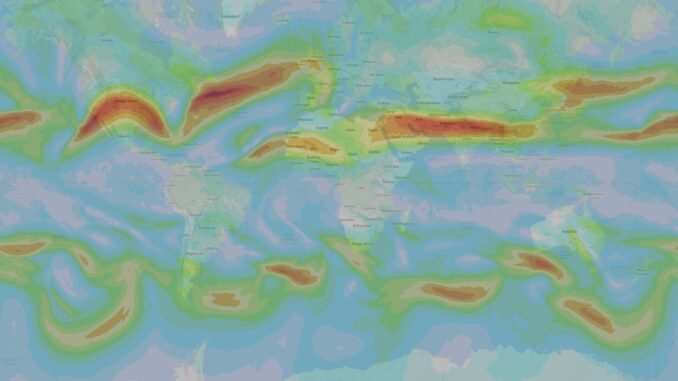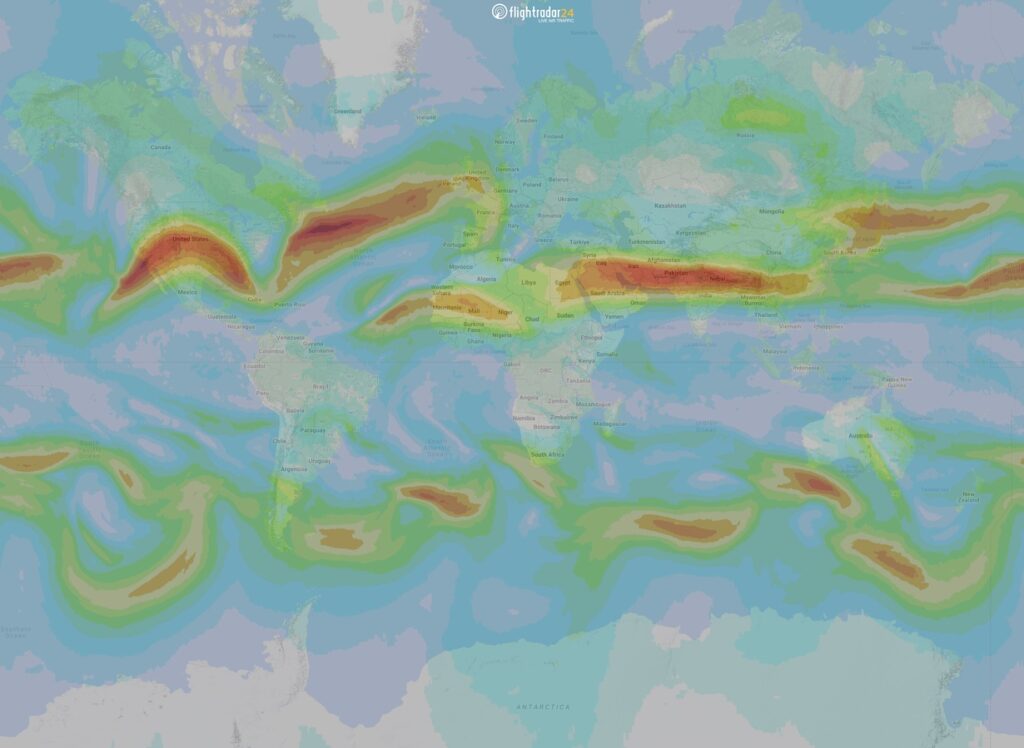
Jet streams shorten transatlantic flights by 30 to 60 minutes, and can propel airliners at supersonic speeds.
Jet streams, powerful rivers of stratospheric air, play a crucial role in reducing transatlantic flight times. This natural phenomenon, which is particularly beneficial for east-west flights, has this week significantly reduced the time taken to cross the Atlantic, without commercial aircraft reaching supersonic speed. This interaction between aeronautical technology and meteorological phenomena offers a fascinating perspective on air travel and its optimization.
The impact of jet-streams on flights
Jet-streams, at altitudes of between 9,000 and 12,000 meters, have a considerable influence on aircraft ground speeds, without affecting their airspeed. This distinction is crucial: even when propelled by these currents, aircraft do not exceed the speed of sound, their speed relative to the surrounding air remaining constant. This week, the phenomenon was particularly pronounced, offering significant time savings for eastbound flights. For example, a Turkish Airlines flight took advantage of a jet stream to increase its ground speed by over 300 knots compared with an aircraft travelling in the opposite direction. This advantage, however, does not alter the flight characteristics of the aircraft, which remains within the speed limits for which it was designed.
Atmospheric and aeronautical context
Jet streams are not isolated phenomena; they are part of a wider context of atmospheric dynamics influencing air navigation. Their understanding and use reveal the complex interplay between meteorological conditions and flight planning. Airlines regularly adjust their flight paths to take advantage of these fast-moving air currents, optimizing flight times and fuel consumption. This week, ground speed records were broken, illustrating the significant impact of jet-streams on transatlantic air travel, with a Virgin Atlantic flight setting a new speed record thanks to these currents.
The impact of speed on the flying experience
While jet-streams can reduce flight times, this acceleration is not without consequences for passengers and crews. Night flights, in particular, pose a dilemma: although shorter, they offer less time for rest, potentially affecting passenger comfort. What’s more, early arrivals can mean waiting times before airports open or landing slots are allocated, posing additional challenges for air traffic management. This week, some flights had to wait due to early arrival, underlining the importance of effective coordination between airlines and air traffic control authorities.
Progress and challenges
The use of jet streams represents a major advance in the optimization of air travel, enabling faster, more efficient transatlantic crossings. However, this acceleration also raises issues of comfort for passengers and management for airlines and air traffic controllers. As technology and understanding of weather phenomena progress, the aviation industry continues to adapt and optimize its operations to offer the best possible experience while navigating within the limits imposed by nature and technology.

The risks of a powerful jet stream
Entering a powerful jet stream does present several implications for an airliner, but it’s important to note that in practice, these aircraft are designed to operate well below the speed of sound, even when benefiting from the additional thrust of a jet stream. The possibility of an airliner reaching supersonic speeds under the effect of a jet stream is extremely remote, due to a number of technical and operational factors. However, let’s theoretically discuss the risks associated with such a hypothetical situation:
Structural and aerodynamic constraints
Airliners are designed and tested to fly within specific speed ranges, with well-defined limits to ensure safety and operational efficiency. Reaching supersonic speeds would impose significant aerodynamic and structural stresses on the aircraft, potentially beyond what it was designed for. Aerodynamic forces, such as the drag and shock associated with supersonic transition, could damage the aircraft’s structure, affecting its integrity and endangering the safety of passengers and crew.
Speed and trajectory management
Commercial aircraft flight control systems are optimized for navigation at subsonic speeds. Sudden entry into a supersonic regime could disrupt trajectory management and aircraft stability, making piloting more difficult and potentially leading to loss of control. In addition, pilots are trained specifically for subsonic operations and may not be prepared to handle the peculiarities of supersonic flight, such as changes in the aircraft’s response to flight controls.
Impact on communication and navigation systems
The transition to supersonic speeds can also affect the aircraft’s communication and navigation systems. Sound waves generated by the aircraft propagate differently at supersonic speeds, which could disrupt normal radio communications and navigation signals. This could hamper the crew’s ability to communicate effectively with air traffic controllers and navigate accurately.
Although jet-streams can significantly reduce flight time by increasing an aircraft’s ground speed, airliners are rigorously designed, tested and operated to avoid supersonic flight regimes. The risks associated with such a situation, while largely theoretical in the context of modern commercial aviation, underline the importance of prudent flight planning and aircraft design to ensure the safety and comfort of all on board.
War Wings Daily is an independant magazine.